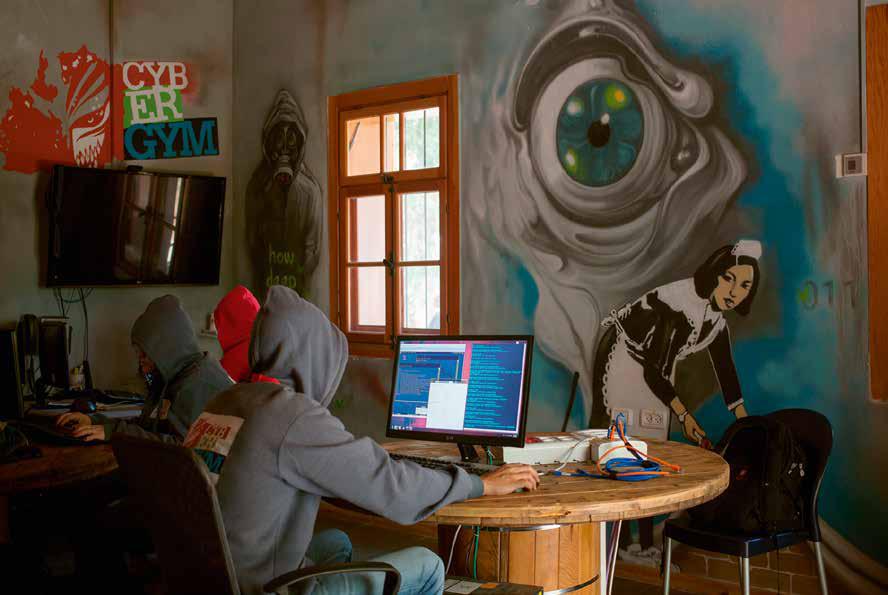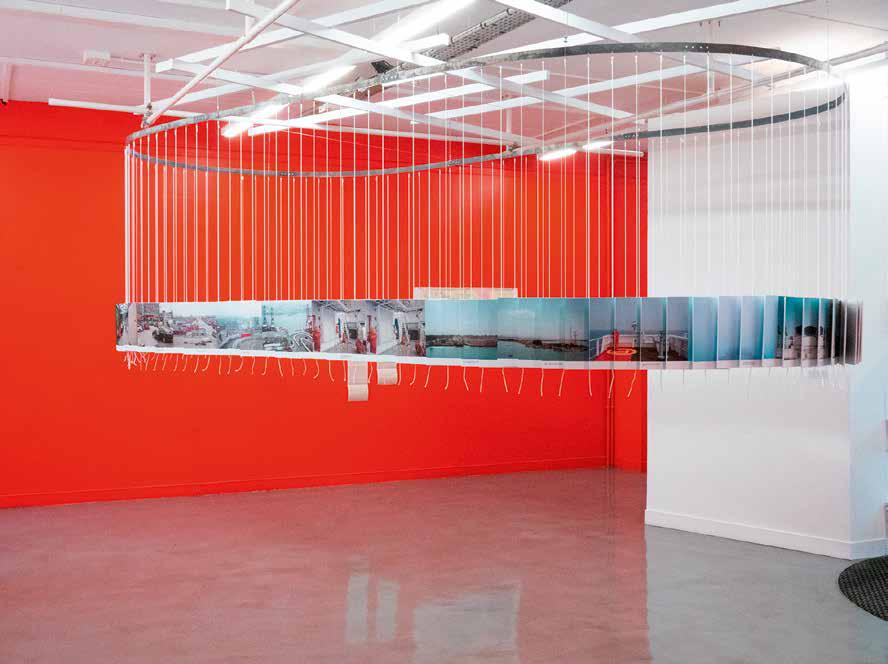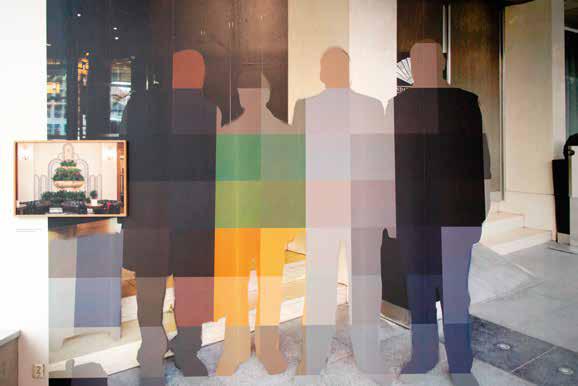Mari Bastashevski
Images Next to Evidence
In “The Perfect Con”, the essay that Mari Bastashevski wrote in 2016 for e-flux journal, she was taken aback by the possibilities that are available for institutional criticism in art. She concludes the text, in which she summarises her participation in an art residency on board a ship operated by the Israeli-based ZIM, one of the world’s largest global shipping companies, with her thoughts on the importance of not giving up to the developments in critical strategies. The artist describes her trip on board a cargo ship during the Container Artist Residency programme, the way in which she gradually became accustomed to the crew, and also the way in which she managed to broach the working organism maintained by a firm hierarchy of relationships. At the same time, she describes the details and personal interactions set against a background of political and economic links – she mentions the history of the transport company as an extended branch of the Israeli navy, its previous participation in military operations, its much-criticised privatisation, and its later transformation into a licensed transporter of dangerous goods, mainly weapons. The artist provides a report of the public image that ZIM tries to create for itself as well as how its presented collaboration with artists serves this purpose.
When she boarded the ship, Bastashevski brought along a camera box which automatically takes photos at regular intervals. This box, named ZIMtm, was gradually moved to all of the spaces on the ship, and the crew members were offered to pose in front of it and to leave messages, but, at the same time, they had the right to cover it or, in an extreme case, even destroy it. Otherwise, all the recorded information was posted directly on Twitter. It is as if this object, performing its routine task in the environment where it was placed, were illustrating the anticipated position of the artist. Her intervention in the form of an instant art project could lead to a situation wherein she becomes a mere accomplice in the process of creating a positive image of a private company, whose connections to big business, national politics, oligarchic structures, and warfare makes it an ethically problematic subject. However, whilst the equipment took a series of almost identical low-resolution photographs on a daily basis, the author could use her stay to research and investigate both the relationship on the ship and the attitude of ZIM to art.
In her work, Bastashevski usually combines research summarised in the form of text and photographs, videos, or documents presented in the form of an installation. Her projects serve as an example of how it is possible for art to enter into the circulation of information and help open certain topics to the public. As a result, the artist’s practice mainly consists of inventing and presenting various modes for the materialisation and visualisation of information. She does this with a special emphasis placed on factual accuracy, and carefully specifies the source of the used data. She always makes sure her findings are verified in collaboration with researchers or local experts. The information obtained through investigative research does not, however, represent the final output of her work, but instead, often predefines the origin of specific photographic images. At the same time, the author puts her finger on the fact that a large amount of data does not necessarily mean greater understanding of reality.
Within the context of her long-term project State Business, which she started to work on in 2010, the artist draws attention to the complex relationships among state officials, corporations, and the media. The individual chapters focus on the international trade and transport of weapons, on technology developed by security services and provided to individual countries by private suppliers, or, for instance, on cases such as the poisoned water supplies in Flint, Michigan.
In the second part of the series, Bastashevski tracks the cash flow and logistics involved in the sale of weapons in relation to international wartime conflicts and investigates the individuals and institutions responsible for these processes. She uses the medium of photography to depict the people and places associated with invisible transactions. At the same time, each of the presented subjects defines the conditions for taking the photographs – particularly the security measures, for example, the nearest distance from which the photograph may be taken – and therefore predefines the limits of what the final photo will look like. Thus, the subjects actually direct their own self-portraits. At the same time, the need to take a photo provides it an excuse to be in a given place at a certain time and to ask provocative questions.
Not only are the phenomena hidden from the spectator’s normal field of vision revealed, but the limitations that prevent their accessibility are uncovered as well. Important themes in Batashevski’s projects include not only the production of forbidden images, but also identification of “blind spots”, i.e. the spaces containing unanswered questions and blocked views. In this sense, her work is similar to, for example, some parts of the Exterritory project by Ruti Sela and Maayan Amir, in which the Israeli duo addresses the effects of censorship and the pressure exerted to prevent the publication of images that could damage the solidity of power structures.
One of Bastashevski’s older projects, File 126, named after an article of the Russian Criminal Code, was completed between 2007 and 2010 and focused on civilian kidnappings during the Russian counter-terrorist operations in Chechnya. In North Caucasus, the artist met hundreds of families affected by the unresolved disappearances of people close to them. The cases are presented to us through photographs of empty interiors, where human figures are noticeably missing. The photos are accompanied with short texts summarising available testimonies about the kidnappings and unheard requests for official investigation of the cases.
In her 2014 project Empty with a Whiff of Blood and Fumes, the artist dealt with the cases of attacks committed by government-sponsored gangs against Ukrainian journalists or activists, the opponents of the Yanukovych regime. Taking photographs of the sites of these attacks. The dismal night- time shots of urban landscapes evoke an atmosphere of helplessness, while the accompanying texts outline the background of organised crime in Ukraine.
Bastashevski is aware of the established conventions for using images and text in journalism, and she wants to give the same amount of space to both the elements in her work. It is for this reason that she works with each of the media separately and lets their statements unite only in the mind of the viewers. Thus, the images leave sufficient space for interpretation and imagination, while the texts provide verifiable facts. This can also cause some tension when the viewers are aware of the contradiction between the meaning of the text and the image.
With this approach, Bastashevski turns to current hostilities and conflicts of interest without showing the direct results or victims of violence. She always looks a bit to the side, at places where one can catch a glimpse of details that, given their context, often escape the attention of information media and ultimately remain hidden from the public eye.









#33 investigation
Archive
- #45 hypertension
- #44 empathy
- #43 collecting
- #42 food
- #41 postdigital photography
- #40 earthlings
- #39 delight, pain
- #38 death, when you think about it
- #37 uneven ground
- #36 new utopias
- #35 living with humans
- #34 archaeology of euphoria
- #33 investigation
- #32 Non-work
- #31 Body
- #30 Eye In The Sky
- #29 Contemplation
- #28 Cultura / Natura
- #27 Cars
- #26 Documentary Strategies
- #25 Popular Music
- #24 Seeing Is Believing
- #23 Artificial Worlds
- #22 Image and Text
- #21 On Photography
- #20 Public Art
- #19 Film
- #18 80'
- #17 Amateur Photography
- #16 Photography and Painting
- #15 Prague
- #14 Commerce
- #13 Family
- #12 Reconstruction
- #11 Performance
- #10 Eroticon
- #9 Architecture
- #8 Landscape
- #7 New Staged Photography
- #6 The Recycle Image
- #5 Borders Of Documentary
- #4 Intimacy
- #3 Transforming Of Symbol
- #2 Collective Authorship
- #1 Face
